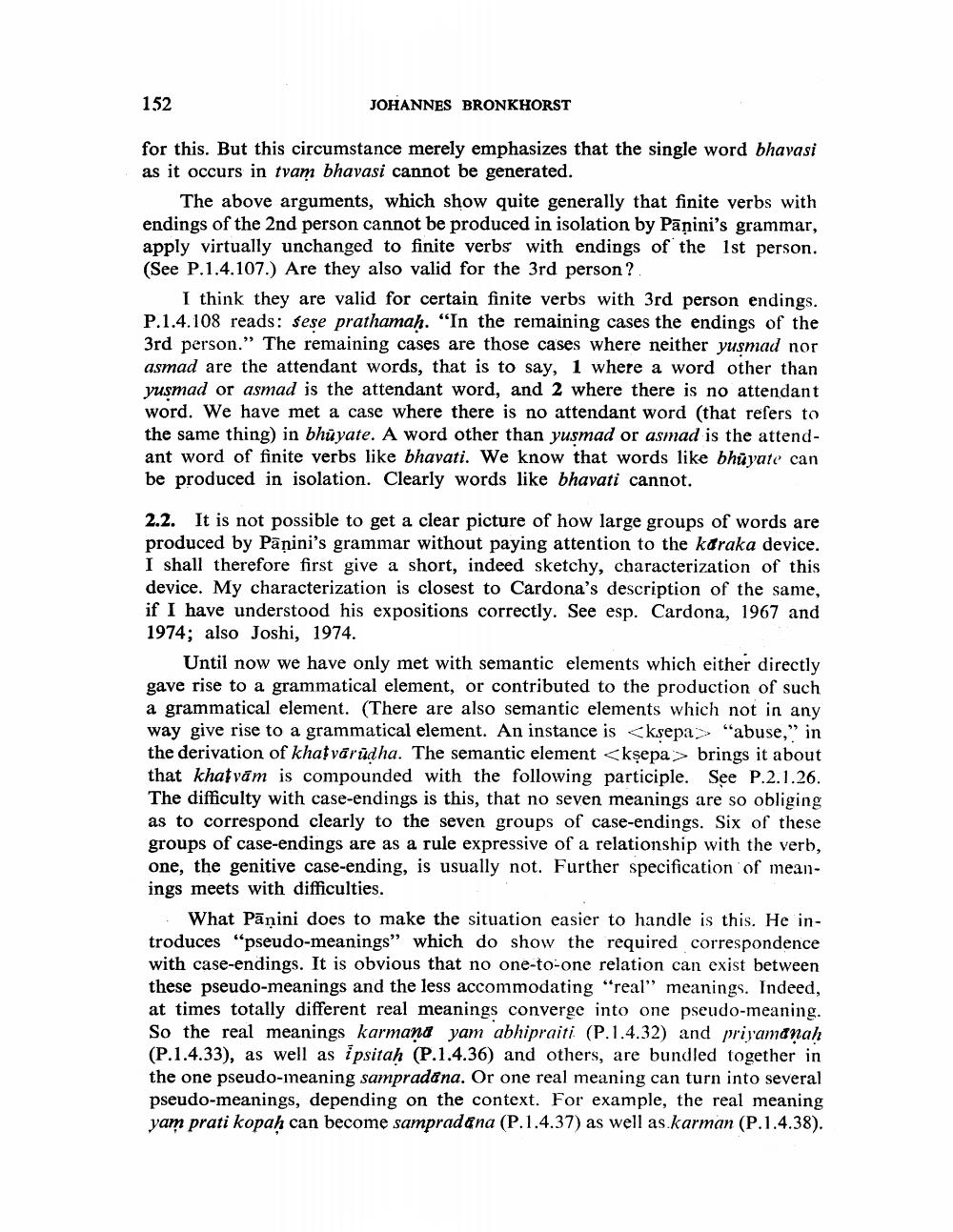Book Title: Role Of Meanings Uin Paninis Grammar Author(s): Johannes Bronkhorst Publisher: Johannes Bronkhorst View full book textPage 7
________________ 152 JOHANNES BRONKHORST for this. But this circumstance merely emphasizes that the single word bhavasi as it occurs in tvam bhavasi cannot be generated. The above arguments, which show quite generally that finite verbs with endings of the 2nd person cannot be produced in isolation by Pāṇini's grammar, apply virtually unchanged to finite verbs with endings of the 1st person. (See P.1.4.107.) Are they also valid for the 3rd person? I think they are valid for certain finite verbs with 3rd person endings. P.1.4.108 reads: sese prathamah. "In the remaining cases the endings of the 3rd person." The remaining cases are those cases where neither yusmad nor asmad are the attendant words, that is to say, 1 where a word other than yusmad or asmad is the attendant word, and 2 where there is no attendant word. We have met a case where there is no attendant word (that refers to the same thing) in bhūyate. A word other than yusmad or asmad is the attendant word of finite verbs like bhavati. We know that words like bhūyate can be produced in isolation. Clearly words like bhavati cannot. 2.2. It is not possible to get a clear picture of how large groups of words are produced by Pāņini's grammar without paying attention to the karaka device. I shall therefore first give a short, indeed sketchy, characterization of this device. My characterization is closest to Cardona's description of the same, if I have understood his expositions correctly. See esp. Cardona, 1967 and 1974; also Joshi, 1974. Until now we have only met with semantic elements which either directly gave rise to a grammatical element, or contributed to the production of such a grammatical element. (There are also semantic elements which not in any way give rise to a grammatical element. An instance is <ksepa› "abuse," in the derivation of khatvārūdha. The semantic element <ksepa > brings it about that khatvam is compounded with the following participle. See P.2.1.26. The difficulty with case-endings is this, that no seven meanings are so obliging as to correspond clearly to the seven groups of case-endings. Six of these groups of case-endings are as a rule expressive of a relationship with the verb, one, the genitive case-ending, is usually not. Further specification of meanings meets with difficulties. What Pāṇini does to make the situation easier to handle is this. He introduces "pseudo-meanings" which do show the required correspondence with case-endings. It is obvious that no one-to-one relation can exist between these pseudo-meanings and the less accommodating "real" meanings. Indeed, at times totally different real meanings converge into one pseudo-meaning. So the real meanings karmana yam abhipraiti (P.1.4.32) and priyamanah (P.1.4.33), as well as i psitah (P.1.4.36) and others, are bundled together in the one pseudo-ineaning sampradana. Or one real meaning can turn into several pseudo-meanings, depending on the context. For example, the real meaning yam prati kopah can become sampradana (P.1.4.37) as well as karman (P.1.4.38).Page Navigation
1 ... 5 6 7 8 9 10 11 12
